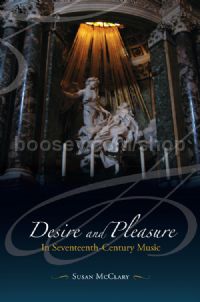Desire and Pleasure in Seventeenth-Century Music
Desire and Pleasure in Seventeenth-Century Music
* Estimated price converted from UK retail price
In this book, Susan McClary examines the mechanisms through which seventeenth-century musicians simulated extreme affective states—desire, divine rapture, and ecstatic pleasure. She demonstrates how every major genre of the period, from opera to religious music to instrumental pieces based on dances, was part of this striving for heightened passions by performers and listeners. While she analyzes the social and historical reasons for the high value placed on expressive intensity in both secular and sacred music, and she also links desire and pleasure to the many technical innovations of the period. McClary shows how musicians—whether working within the contexts of the Reformation or Counter-Reformation, Absolutists courts or commercial enterprises in Venice—were able to manipulate known procedures to produce radically new ways of experiencing time and the Self.
Prelude: The Music of Pleasure and Desire
Part I. The Hydraulics of Musical Desire
1. The Expansion Principle
2. Composites, or the Still-Divided Subject
Part II. Gendering Voice
3. Soprano as Fetish: Professional Singers in Early Modern Italy
4. Gender Ambiguities and Erotic Excess in the Operas of Cavalli
Part III. Divine Love
5. Libidinous Theology
6. Straining Belief: The Toccata
Part IV. Dancing Bodies
7. The Social History of a Groove: Chacona, Ciaccona, Chaconne, and the Chaconne
8. Dancing about Power, Architecture about Dancing
Part V. La Mode Française
9. Temporality and Ideology: Qualities of Motion in Seventeenth-Century French Music
10. The Dragon Cart: The Femme Fatale in Seventeenth-Century French Opera
Postlude: Toward Consolidation
Notes
Index




